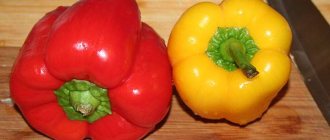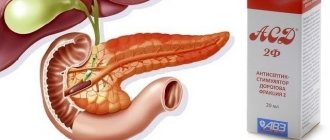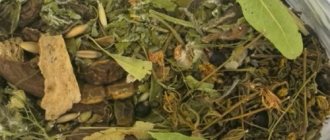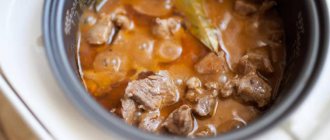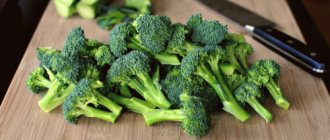Opinions vary significantly about whether bell peppers can be eaten if you have pancreatitis. Some experts say that sweet peppers are useful in small doses when properly processed, while others say that the vegetable is prohibited to consume due to its effect on the pancreas.
The reason for such widespread information is the individual tolerance of the product and the degree of inflammation of the pancreas. Concomitant diseases, for example, gastrointestinal dysfunction or unstable blood pressure, may also have an additional impact.
Bell pepper: benefits for the body
Since bell pepper is a valuable food product, one of the pressing questions for people with pancreatic problems is whether it can be eaten with pancreatitis? Let's talk about this in more detail.
The fact that pepper is healthy is no secret. But what exactly is its nutritional value and benefits for the body? First of all, it is a real storehouse of vitamins, minerals, biologically active substances (vitamins A, C, E, B, P, H, K, organic acids, calcium, iron, magnesium, phosphorus, potassium, fluorine, copper, alkaloids, flavonoids , fiber and many others).
Doctors say that its regular consumption is an excellent prevention of diseases of the cardiovascular system, metabolic problems, digestion, and support of brain activity.
This is an exclusively dietary vegetable, which consists of 90% water. Its 100 grams contain only 7.2 grams. carbohydrates, 1.3 g. Belkov, 0.3 gr. fat Plus, it's only 27 calories! Due to this, it is invariably included in most dietary dishes.
Due to its taste, it is successfully used in most countries of the world (and some cuisines simply cannot be imagined without hot pepper).
Here is just an approximate list of the valuable properties of bell peppers (regardless of color and variety):
- The most valuable biological composition that it shares with our body.
- Strengthening the immune system (due to the content of zinc and ascorbic acid).
- Beneficial effect on vision (thanks to vitamin A and carotene).
- Reducing cholesterol.
- Activation of brain activity (memory, thought processes) due to the content of B vitamins.
- Fighting stress, insomnia, and depression.
- Strengthening, supporting the heart and blood vessels, preventing varicose veins, blood clots (due to the high content of potassium and phytoncides). Reduced pressure. Reducing the risk of strokes (thanks to vitamins P and C).
- Prevention of anemia.
- Normalization of peristalsis and intestinal microflora (due to the high fiber content, intestinal motility improves and constipation is eliminated).
- Natural cleansing of the body.
- Increased appetite (high alkaloid content increases the secretion of gastric juice).
- Help in the fight against radicals and carcinogens. Antioxidant action.
If we talk about red hot pepper, it is equally beneficial for the body, but additionally creates a powerful antibacterial effect. Please also note that this species, unlike its “Bulgarian” relative, does not contribute to a decrease, but an increase in blood pressure (therefore, it should be used with caution by hypertensive patients).
Use of the product in remission
Many people are interested in the question: “Is it possible to eat pepper in remission?” It is allowed to include the product in the diet after the pancreas has undergone a rehabilitation period. Initially, it is allowed to use paprika in stewed and boiled form, since after exposure to high temperatures the level of phytoncides and alkaloids is significantly reduced.
After some time, fresh pepper is allowed to be consumed, especially by persons with insufficient secretory function of the pancreas. Of course, you shouldn’t completely give up consuming the product, because sweet peppers are rich in various vitamins and minerals. Due to this, it has a positive effect on the pancreas during the inflammatory process in it.
A nutritionist will tell you what dietary changes should be implemented.
Read also: Diet 5 for pancreatitis
In addition, other properties can be observed:
- potassium helps strengthen the muscular wall of the heart;
- phytoncides reduce blood cholesterol levels;
- zinc and ascorbic acid increases the body's defenses;
- carotene or vitamin A improves the condition of the skin, hair, and has a positive effect on vision;
- vitamin P and C strengthen the walls of blood vessels;
- B vitamins have a positive effect on brain function.
The alkaloids it contains promote the secretion of pancreatic and gastric juice.
Bell pepper and pancreatitis: general rules of use
Everyone knows that for pancreatitis, doctors prescribe a fairly strict diet. The main task of nutrition in this case is to reduce the load on the pancreas, preventing an exacerbation of the disease.
As for bell pepper, it is allowed for consumption, but only if important rules are observed. So, knowing that your list of diseases includes problems with the pancreas, try to follow simple but valuable recommendations:
- Always follow the principles of common sense, do not overuse any foods, including healthy ones (even overdoing it with healthy ones can cause harm to the body, and pepper is no exception).
- Try not to eat more than two vegetables per day (the average amount recommended by experts).
But all these rules apply only to those situations when the disease is in remission, is chronic, but not acute, you lead your usual life activities, and the pancreas does not bother you!
Allowed and prohibited varieties of vegetables
All types of pepper have almost the same composition of biologically active and mineral substances. However, they still differ in the presence and concentration of some of them. Hot peppers have more ascorbic acid and are also rich in acids and capsacins, which give them bitterness. Therefore, not all varieties of the product are approved for use for pancreatitis.
You should remember the basic rule: sweet (Bulgarian) peppers, as well as some varieties with a light peppercorn, are allowed for use for pancreatic ailments. All types of bitter, pungent vegetables are prohibited even at the stage of stable remission, as well as in cases of chronic pancreatitis.
| Permitted varieties | Prohibited species |
| Sweet green | Chile |
| Sweet yellow | Jalapeño |
| Sweet black | Red Savina |
| Sweet pod | Bird's eye |
| Pimenta | Dragon breath |
| Anaheim | Kaneisky |
| Tabasco | Nonivamide |
Regarding the form of heat treatment, boiled and stewed peppers are allowed for use for pancreatitis. Baked product, when consumed in large quantities, can contribute to the development of caries.
Bell pepper and pancreatitis: if the disease is in the acute stage
Note! In the acute form of pancreatitis, in cases where the pancreas is inflamed (you experience discomfort, discomfort, pain, the doctor detects the inflammatory process), bell pepper should be consumed with extreme caution (especially in its raw form, like other raw vegetables and fruits), or even temporarily eliminate its use until a state of remission is achieved.
The fact is that its use provokes the production of gastric juice, which is undesirable at the acute stage of the disease and can cause discomfort and even acute pain (flatulence, lead to nausea, vomiting). And the main task during the period of exacerbation of pancreatitis is to reduce the activity of digestive enzymes that destroy pancreatic tissue.
After stabilizing the condition of the pancreatic mucosa and reducing inflammatory processes, bell pepper should be introduced into the diet carefully, starting with 30-40 grams. per day, gradually increasing the amount to 70-100 g. in a day.
Benefits and harms
Bell pepper consists of alkaloids, phytoncides, and also contains large amounts of vitamin C, which have a beneficial effect on the pancreas. The percentage of this component is higher than in lemon, which stimulates the production of gastric juice and pancreatic enzymes. But this only applies to fresh vegetables. Therefore, if pancreatitis worsens, it is better to exclude bell peppers that have not undergone heat treatment from the diet.
Doctors do not recommend completely abstaining from vegetables if you have pancreatitis, since they do more good than harm. The beneficial substances of the vegetable have an antioxidant effect on the body.
Bell peppers contain zinc.
He contains:
- vitamins C, P, group B;
- lycopene;
- sodium;
- iodine;
- calcium;
- fluorine;
- phosphorus;
- zinc;
- iron;
- potassium;
- copper;
- selenium;
- magnesium;
- manganese;
- folic acid;
- coumaric and chlorogenic acids.
Thanks to the above vitamins and antioxidants, the vegetable has a positive effect on the body during pancreatitis:
- Blood pressure is normalized and blood thins.
- metabolic processes improve, which is useful for people who are overweight;
- gastrointestinal motility is stimulated, thereby relieving constipation;
- the nervous system is strengthened;
- vision improves;
- The level of cholesterol in the blood decreases, the condition of the vascular walls improves;
- carcinogenic substances are removed.
The great benefit of the vegetable for pancreatitis was noted in atrophic processes and decreased secretion in the pancreas.
Bell peppers: when to completely eliminate them
Despite the high nutritional value of bell pepper, it is not recommended for use in food under the following conditions:
- High blood pressure (we are talking about hot pepper, which, as we have already said, increases blood pressure; bell pepper can and should be safely consumed even by hypertensive patients).
- Allergic reactions to substances contained in pepper.
- Any diseases of the gastrointestinal tract that are in the acute stage, in particular ulcers (primarily this applies to hot peppers).
- Serious liver and kidney diseases.
- Hyperactivity, excitability of the central nervous system.
- Epilepsy.
Also, people with high acidity of gastric juice should treat pepper with caution.
Composition, beneficial properties of bell pepper
Fresh vegetables contain a huge amount of vitamins B, C, A, E, PP, trace elements calcium, potassium, iron, zinc, magnesium, selenium, etc. Paprika is rich in peptin, fiber, alkaloids, poly-, monosaccharides, and nitrogenous compounds. Due to its rich chemical composition, pepper has the following effects on the body:
- Relieves inflammation;
- Improves digestion;
- Clears the blood of harmful cholesterol;
- Improves the condition of blood vessels;
- Supports heart function;
- Normalizes blood pressure;
- Increases hemoglobin;
- Strengthens the immune system;
- Stimulates metabolism, burns fat;
- Cleanses the intestines of toxins, harmful compounds, wastes
- Calms the nervous system;
- Improves cell regeneration;
- Prevents the development of cancer;
- Has a mild diuretic, choleretic, laxative effect;
- Prevents the formation of blood clots;
- Improves brain activity;
- Slows down the aging process;
- Improves potency in men;
- Relieves muscle tension;
- Improves visual acuity.
During heat treatment, some beneficial qualities are lost, while others, on the contrary, appear. So, raw pepper can cause diarrhea, bloating at the initial stage of exacerbation of pancreatitis, stewed or boiled - no.
Bell peppers and pancreatitis: how best to cook and consume
Despite the fact that during heat treatment it loses some of its nutrients (and therefore beneficial properties), for diseases of the pancreas it is recommended to consume it mainly in cooked form (raw pepper can also be eaten, but only in small quantities).
The best heat treatment option, which allows you to preserve the maximum beneficial qualities of bell peppers, is stewing and baking. It can also be successfully added to soups, as well as any other dishes to add texture, color, and aroma.
Bell peppers and pancreatitis: preparing delicious and healthy dishes
The cooking possibilities are very wide: it can be eaten fresh, boiled, stewed, baked, added to soups, salads, meat and vegetable dishes, stuffed.
Interestingly, there are two types of bell pepper (male and female). The fruit of the first type is divided into 3 segments, and the fruit of the second is divided into 4 segments (which is easy to determine by carefully looking at the vegetable). According to culinary specialists, male peppers are best used for preparing soups, side dishes and main courses. It is preferable to use female peppers raw (add to salads and other dishes, use for decoration).
Among the simplest, most delicious and healthy bell pepper dishes:
- Stuffed pepper.
- Vegetable stew.
- Vegetable saute.
- Soup with bell pepper.
- Omelette with vegetables.
- Pepper and cheese appetizer.
Let's look at the recipes for these dishes in more detail.
- Stuffed pepper. To prepare it, take any meat (chicken, pork, beef or a combination of them) and grind it in a meat grinder. To the resulting minced meat, add onions and carrots fried in a frying pan (you can also add boiled rice or buckwheat, as well as millet). Everything is mixed well into a homogeneous mass. The resulting filling is filled with pre-prepared peppers (washed and cored). The peppers stuffed in this way are placed tightly in a saucepan or stewpan, filled with water (so that it covers the peppers completely), salted and simmered over medium heat until tender (25-30 minutes). If desired, you can add tomato puree and sour cream to the water. You can experiment with the filling for stuffing and fill it with vegetables, for example, stewed cabbage. And to make this dish as dietary as possible, it can be prepared in a double boiler.
- A successful variation of this recipe is baked peppers. The difference is that in this recipe the peppers are stuffed not whole, but in halves, stuffed with minced meat (can be fried with onions and carrots), laid out on a sheet and baked until tender (the same 25-30 minutes).
- Vegetable stew. To prepare vegetable stew, any vegetables can be used, but most often potatoes, carrots, eggplants, onions, bell peppers, zucchini, and tomatoes are added. All selected vegetables are cut into pieces of approximately the same size, placed in a frying pan or saucepan, salted and stewed (with or without a small amount of vegetable oil) until cooked (from 40 to 60 minutes). If you add any type of meat to a vegetable stew (if you have problems with the pancreas, you should give preference to chicken), you will get another, no less tasty and healthy dish.
- Vegetable saute. To prepare this dish, you need to take several pieces of eggplant, zucchini, bell pepper, and onion. Cut the vegetables into approximately equal pieces, averaging 2 by 2 centimeters in size. Fry separately until golden brown in a frying pan, then combine in layers, add salt, add spices to taste, a little water, and simmer until done.
- Soup with bell pepper. In fact, bell pepper can be successfully added to any of the soups (this is done towards the end of cooking, when most of the vegetables are already cooked). But the most preferable for people suffering from pancreatitis are light vegetable soups or soups made with weak, clear chicken broth.
- To prepare vegetable soup, diced potatoes are boiled until partially cooked, onions and carrots are fried separately, then they are added to the potatoes. Immediately add finely chopped bell pepper, tomato paste (but you can do without it), salt, herbs, after which the dish is brought to readiness.
- Omelette with vegetables. An excellent dish in its nutritional value, taste and aesthetics. To prepare it, fry any selected vegetables (bell peppers, tomatoes, onions, asparagus, zucchini, etc.) in a frying pan until tender in vegetable oil, adding salt and spices to taste. Then the vegetables are poured with eggs (you can either break whole eggs or beat the mixture like an omelette), add a little salt. After 7-10 minutes the dish is ready. It doesn’t hurt to sprinkle some fresh herbs at the end.
- Pepper and cheese appetizer. An excellent recipe that is also suitable for the holiday table. To prepare it, choose bright, fleshy varieties, which should be washed and cored (as for regular stuffing). Separately, hard cheese is grated, which is mixed with sour cream or cream for a more delicate taste (boiled eggs, as well as dill or parsley, can also be added to the filling). Stuff the peppers with the resulting filling and place in the refrigerator for a couple of hours. Carefully slice before serving.
Pepper recipes approved for consumption
Below are several recipes with bell pepper that are allowed for inflammation of the pancreas.
Recipe No. 1. Bell pepper with minced chicken, baked in the oven
Is it possible to eat watermelon if you have pancreatitis?
Fresh vegetables: peel onions and carrots and grate them on a fine grater. Wash the peppers and cut out the cores along with the seeds.
Wash the chicken breasts and grind through a meat grinder (you can use ready-made minced chicken)
First, bring the rice to a boil and let it stand for 10–15 minutes (no need to cook it until fully cooked). Then drain the rice water and rinse the rice under water. Mix all the ingredients, adding a little salt (a large amount causes swelling of the pancreas).
Stuff the peppers, place them in a deep container, pour in some water and place in the oven for 60 minutes at 200 degrees. The pepper will turn out juicy, baked in its own juice. You can stuff the peppers with just vegetables.
Stuffed peppers with vegetables and minced meat - a dish for everyday and holiday table
Recipe No. 2. Steamed peppers in a slow cooker with meat
Wash the required amount of the main product well and cut it into 2 parts. Pass the meat, onions and carrots through a meat grinder, adding 1 egg and a little salt. Divide the resulting mass among the pepper halves and steam using a multicooker. This recipe can be made using a pan of water or baked in the oven.
Read also: Vegetables and fruits for pancreatitis
Recipe No. 3. Vegetable stew in a frying pan
Wash bell peppers, onions, carrots, boiled potatoes, zucchini and eggplant well and cut into cubes of the same size. Add a small amount of water to the pan (you can do without it - zucchini and eggplant give a lot of juice) and simmer everything together for 40-60 minutes until fully cooked.
You are allowed to add a little salt and minced chicken. It is not recommended to put products that contain tomato. Important! If for some reason it is not possible to heat treat the product, then it is recommended to abandon it for a while.
Bell pepper and traditional medicine
Considering all the beneficial properties that pepper has, it is not surprising that it is widely used in folk medicine:
- Sweet peppers are most often used to make powder (the fruits are first dried and then ground in a coffee grinder), which are added to ready-made or almost ready-made dishes. This powder contains a huge amount of vitamins and microelements and has a general strengthening effect, which is especially important during cold periods when the body is deficient in vitamins;
- Freshly squeezed bell pepper juice has approximately the same properties. To prepare it, it is better to choose fleshy, bright and juicy fruits, which are cleared of seeds and stalks, and then passed through a juicer (for additional effect and taste, you can add honey to this juice). Freshly squeezed bell pepper juice can be used for any diseases associated with a lack of vitamins and loss of strength, but not during an exacerbation of diseases of the gastrointestinal tract;
- based on hot pepper, folk craftsmen make various infusions and decoctions, which are used both internally and externally;
- infusions and extracts of hot pepper have a powerful antimicrobial, antiparasitic effect, are used for dysbacteriosis, to stimulate appetite, and are used for hair loss, radiculitis, even frostbite and bedsores;
- very often red hot pepper is used in folk medicine to cleanse blood vessels;
- a pinch of red hot pepper (along with a pinch of cinnamon) is recommended to be added to low-fat kefir and drunk on an empty stomach for people suffering from diabetes;
- Hot pepper is effectively used in the fight against cough. To do this, a little powder from it is mixed with honey, and the resulting mixture is eaten a tablespoon three times a day.
The effect of vegetables on the pancreas
Bell pepper contains a huge amount of vitamins, micro- and macroelements, compounds, and acids. It has a beneficial effect on the circulatory, cardiac, immune, reproductive, nervous, and digestive systems. Raw vegetables strengthen the body as a whole and replenish the supply of nutritional components. Strengthens the body's protective functions. Stewed, boiled sweet peppers improve digestion, accelerate the excretion of feces, cleanse the body of toxins, and remove harmful cholesterol.
Bell pepper stimulates the secretion of gastric juice and increases acidity. Digestion of food is accelerated. To improve well-being, use for constipation, decreased pancreatic activity, and poor appetite. But in case of diarrhea, nausea, vomiting, the vegetable should be discarded. Do not eat if you have pancreatitis accompanied by high acidity.
